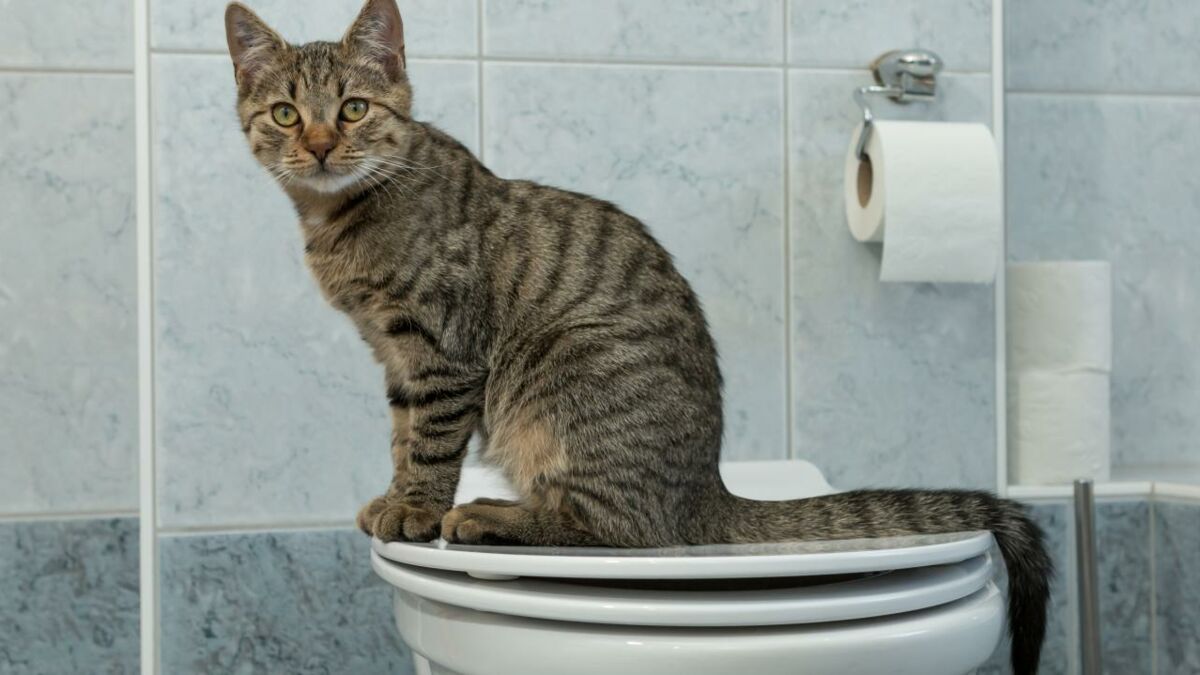Potential Risks of Flushing Cat Poop Down Your Toilet - Advice for Better Handling
Potential Risks of Flushing Cat Poop Down Your Toilet - Advice for Better Handling
Blog Article
The article author is making several good annotation relating to Can You Flush Cat Poop Down The Toilet? overall in this content below.

Intro
As cat proprietors, it's essential to bear in mind how we get rid of our feline close friends' waste. While it might seem practical to flush pet cat poop down the commode, this technique can have detrimental repercussions for both the environment and human wellness.
Alternatives to Flushing
Luckily, there are more secure and a lot more accountable methods to dispose of pet cat poop. Consider the following options:
1. Scoop and Dispose in Trash
One of the most usual approach of getting rid of feline poop is to scoop it right into an eco-friendly bag and toss it in the garbage. Be sure to use a devoted trash inside story and throw away the waste promptly.
2. Use Biodegradable Litter
Select biodegradable pet cat litter made from materials such as corn or wheat. These litters are environmentally friendly and can be safely gotten rid of in the trash.
3. Bury in the Yard
If you have a lawn, think about burying feline waste in an assigned area away from vegetable gardens and water resources. Make certain to dig deep adequate to stop contamination of groundwater.
4. Mount a Pet Waste Disposal System
Invest in an animal waste disposal system particularly designed for cat waste. These systems utilize enzymes to break down the waste, lowering odor and ecological impact.
Wellness Risks
In addition to environmental issues, purging cat waste can also present health and wellness dangers to humans. Pet cat feces might consist of Toxoplasma gondii, a parasite that can cause toxoplasmosis-- a potentially severe ailment, specifically for expecting females and individuals with weakened body immune systems.
Ecological Impact
Flushing pet cat poop presents dangerous pathogens and bloodsuckers into the water supply, positioning a substantial danger to aquatic ecosystems. These impurities can adversely influence marine life and concession water top quality.
Conclusion
Accountable animal ownership extends past offering food and sanctuary-- it additionally includes proper waste monitoring. By refraining from flushing pet cat poop down the bathroom and opting for alternate disposal approaches, we can reduce our ecological footprint and shield human health and wellness.
Why Can’t I Flush Cat Poop?
It Spreads a Parasite
Cats are frequently infected with a parasite called toxoplasma gondii. The parasite causes an infection called toxoplasmosis. It is usually harmless to cats. The parasite only uses cat poop as a host for its eggs. Otherwise, the cat’s immune system usually keeps the infection at low enough levels to maintain its own health. But it does not stop the develop of eggs. These eggs are tiny and surprisingly tough. They may survive for a year before they begin to grow. But that’s the problem.
Our wastewater system is not designed to deal with toxoplasmosis eggs. Instead, most eggs will flush from your toilet into sewers and wastewater management plants. After the sewage is treated for many other harmful things in it, it is typically released into local rivers, lakes, or oceans. Here, the toxoplasmosis eggs can find new hosts, including starfish, crabs, otters, and many other wildlife. For many, this is a significant risk to their health. Toxoplasmosis can also end up infecting water sources that are important for agriculture, which means our deer, pigs, and sheep can get infected too.
Is There Risk to Humans?
There can be a risk to human life from flushing cat poop down the toilet. If you do so, the parasites from your cat’s poop can end up in shellfish, game animals, or livestock. If this meat is then served raw or undercooked, the people who eat it can get sick.
In fact, according to the CDC, 40 million people in the United States are infected with toxoplasma gondii. They get it from exposure to infected seafood, or from some kind of cat poop contamination, like drinking from a stream that is contaminated or touching anything that has come into contact with cat poop. That includes just cleaning a cat litter box.
Most people who get infected with these parasites will not develop any symptoms. However, for pregnant women or for those with compromised immune systems, the parasite can cause severe health problems.
How to Handle Cat Poop
The best way to handle cat poop is actually to clean the box more often. The eggs that the parasite sheds will not become active until one to five days after the cat poops. That means that if you clean daily, you’re much less likely to come into direct contact with infectious eggs.
That said, always dispose of cat poop in the garbage and not down the toilet. Wash your hands before and after you clean the litter box, and bring the bag of poop right outside to your garbage bins.
https://trenchlesssolutionsusa.com/why-cant-i-flush-cat-poop/

Hopefully you enjoyed reading our part on Don’t flush cat feces down the toilet. Thank you so much for taking time to read through our posting. Sharing is nice. Who knows, you may very well be doing someone a favor. I praise you for your time. Kindly pay a visit to our blog back soon.
Additional Information Report this page